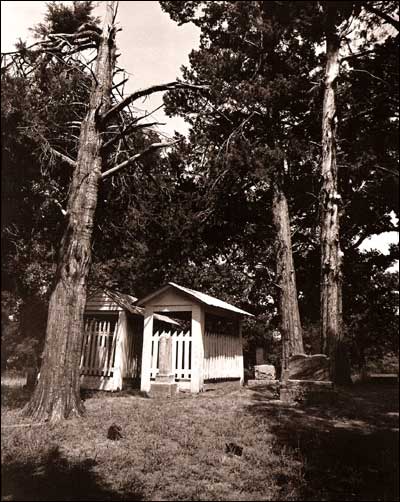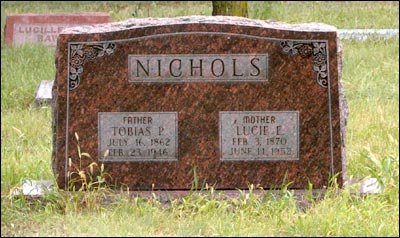
|
|
|
Search our site
Check these out    Do you have an entertaining or useful blog or personal website? If you'd like to see it listed here, send the URL to leon@pawneerock.org. AnnouncementsGive us your Pawnee Rock news, and we'll spread the word. |
Too Long in the WindWarning: The following contains opinions and ideas. Some memories may be accurate. -- Leon Unruh. Send comments to Leon May 2008A photo I like: No. 89
[May 31] You might look at this photo of a waterfall and wonder what it has to do with Pawnee Rock. It has everything, and it has nothing. I came across this cataract in 1978 when I was working for the summer in Minneapolis, Minnesota. On a long weekend, I drove half a day up to the north shore of Lake Superior, by myself in my brown Plymouth Duster, with the wide eyes you might expect from somebody who keeps discovering that the real world contains things that he had only read about. There was Lake Superior itself, cold and stormy in July. Duluth with its cargo ships. Lighthouses above stern cliffs. Mosquitoes in swarms that paid no heed to my long-sleeve shirt. Northern forests, which were hardly like what I knew in the Ozarks and nothing at all like the mature plains of western Kansas. I was 21 and practically independent. I had lived away from Pawnee Rock before, but now I was residing in a coworker's basement in Minneapolis and, for a few days, tooling around in a part of the country where I knew absolutely nobody and hadn't thought to make motel reservations. So I was pretty pleased with myself. When I came to a small state park along the lake, I hiked in on a needle-covered trail. I heard the waterfall before I saw it: exuberant water, running madly toward Superior over iron-colored rock in a strange forest of trees, mosses, and ferns. In the first few minutes at the waterfall, my perspective on the world changed. This was the forest primeval. This was closer to the beginning of time. This was nature opening itself to me. I'd go on to finish college and spend 11 years living along the concrete river of Interstate 35. When the opportunity came to return to the forest and the splashing rivers, I was ready. I didn't tell my wife this, but moving to Alaska was the next step on a journey I had started that day at the waterfall. A couple of years ago, my dad and I were talking about my living in Alaska. He had lived all his years in Barton County and has refused my efforts to get him to visit. It was one of those discussions with the undertone of missed opportunities. Finally, Dad asked a question that seemed to yearn its way out of him. "Leon," he said, "have you ever seen a waterfall?" Naming the basketball players
[May 30] Don Ross of Dodge City can identify some of the players and the coach in the Pawnee Rock High School basketball team features on the homepage yesterday. "Until you get better info, I think some names are: "Back row -- Soupy Kennison, Bub French, ?, Earl Siebert, Darrell Houdyshell, Jeff Wilson. [Update: Val Houdyshell wrote on June 2 to identify Mr. Houdyshell as Deryl.] "Front row -- ?, Gwen French, Garfield Schmidt, ?, Gerald Bradley." The Houdyshell history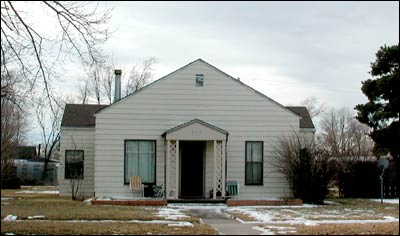
This house on Cunnife Avenue was where Lucy Houdyshell lived. [May 30] Vance Houdyshell of Florida wrote with more information about the Houdyshell family. He mentions a son named Vivian. If that name were shortened to Vin, would that have been the Vin Houdyshell who ran a pharmacy in Pawnee Rock for a while and then moved his business to Larned? Here's what Vance sent: "Lucy Houdyshell was my great grandmother, and she was a Holland. Grandad Vance's middle name was Holland. I found a parcel of land in the name of George Holland on an old plat map at the web site. Lucy had a dress shop or clothing store of some kind there. She had a sister whom was always present. "There were three Houdyshell boys: Vance & Vivian (twins) and Wayne. "Wayne lived in Pawnee Rock all his life and was best friends with his neighbor Dick Bowman. Now I know that must sound familiar. They were sportsman who fished and hunted together from cradle to grave (I wish that I had that kind of relationship). [Read what Virgil Smith wrote about Wayne and Dick.] "The wedding at the Rock was a cousin of my grandfather's. They lived across the street from them on Shawnee Drive in Great Bend near the park." Hello from Vance Houdyshell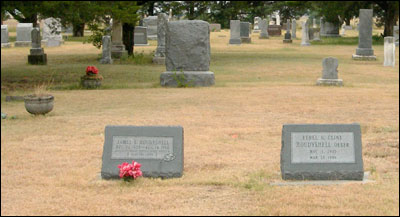
James E. Houdyshell, Vance's father, is buried in the new section of the cemetery, about a quarter of the way up. His marker has the red flowers. [May 29] Vance Houdyshell, who lives in Vero Beach, Florida, discovered our website and wrote to say hello. He seems like a pretty busy fellow, describing himself as a general contractor, father of two daughters, and Harley Davidson drag racer. I asked Vance whether he had been to Pawnee Rock lately. "I haven't been there for about 18 years," he wrote. "I buried my father there. What a peaceful place to be laid to rest. My grandfather's family was from Pawnee Rock." Vance's father, James E. Houdyshell, is buried in the new section of the cemetery. If you attended Mr. Houdyshell's funeral, you are thought of kindly. "I remember how nice the church families were to us there," Vance wrote. "Real people!" "I have been there a half of a dozen times, so I have clear memories of it." Vance's grandfather was also named Vance. "Grandad Vance moved to Great Bend and became the chief of police." The elder Vance, by the way, had another claim to fame. In 1936, he attended the first recorded wedding (Lois Gilbert married Harold Becker) atop Pawnee Rock State Park. 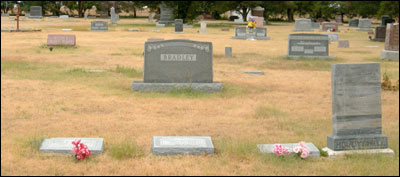
Vance Houdyshell lies in the center section, along the road west of the water pump. His stone is the middle flat one; he's next to Wayne, Lucy, and William. High plains, high tech[May 29] If you have any doubts about how much high technology has changed driving across Kansas, Leon Miller offers an example. He wrote yesterday about helping some cyclists avoid a storm north of Larned, and he adds this: "A funny but true part of this story is that I had called my son in Nashville on my cellphone around 6:00 pm and as I was discussing the storms he got on his computer and gave us advice on where the storms were concentrated and direction of travel. "My last call to him was about 8:30 p.m. and he told me, 'Dad, if you wait about 15 minutes it looks like the storms will have passed by (going northeast) U.S. 183 and it's clear sailing to Hays.' We followed his advice and made it back to Hays without incident. What a wonderful thing, this modern technology!" The impending storm[May 28] Do you remember that TV commercial from the 1970s in which a French tourist has trouble getting around until an Ordinary American explains something that solves all the tourist's problems? The tagline was something like, "A foreigner's most memorable experience could be you." I suggest that Leon Miller might be be that memorable experience this week for a quartet of cyclists. Here's his story: "I was privileged to attend the Memorial Day services at Pawnee Rock yesterday and was deeply moved. It was a beautiful day and was capped by the delicious lunch provided at the community center afterward," Leon wrote. "I would have liked to have met Jim Dye; I didn't recognize anyone in particular taking pictures but saw all the subjects in his photographs. "Unfortunately, I was the only one from my class (1951) at the calling of the roll. And this year they were able to accommodate all those in attendance in one room of the community building (sic-depot). "A little side note -- Sunday afternoon we had spent time placing flowers on the graves and were headed back to my sister's in Hays, when we noticed a series of ominous black clouds in the north and northwest. We had gotten as far as Rush Center but listening to the weather on the radio, turned around and returned to Larned to wait out a bad storm. We pulled into a Subway store and ordered something to eat. As we were eating I noticed these 4 young "kids" (two boys and two girls, probably in their early 20s) observing the impending storm. They were dressed in bicycle riding gear and as I walked up to speak to the boys they told me they were bicycling from the east coast to the west coast. "They had never seen this type of weather before and asked me what I thought about it. At the time the clouds were in a perfect formation to spawn a tornado and I told them that. They asked me what to do and I told them to check into the Best Western motel next door and wait until the next day to proceed on their journey. They gave me this look of relief and did just that. "Thankfully I was right as not more than 15 minutes later one of the worst rainstorms I've experienced came through and those poor kids would have been in bad shape if they had been out in it. But the rain passed and we continued back, safely to Hays. "Hopefully, those 4 bicyclists are happily on their way somewhere in western Kansas or eastern Colorado by now; and appreciative of the advice of an old man who has seen many tornadoes in his lifetime." Army of tornadoes: Yesterday, a note from Leon Miller mentioned a tornado that struck Rozel in the 1940s, and I should have thought then to link to Stan Finger's May 20 weather blog entry on that very subject. Also, check out the footage he has of this month's Quinter tornado. And while you're at it, look in today's Kansas.com (the Wichita Eagle) for Stan's new article, which he described yesterday: "I wrote a story for tomorrow about the fact that sooooo many small Kansas towns had close calls from tornadoes this weekend: Ransom, Otis, Bison, LaCrosse, Greensburg, Kinsley....it was amazing....." Amy Deckert: Many of you remember Amy Deckert, the youngest child of Adam and Helen Deckert. She has been my sister's friend since forever. Cheryl has written a funny and thoughtful column about Amy on her site, FlyoverPeople.net. Where the flowers went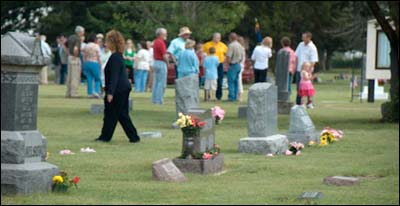 Memorial Day's flowers brighten the Pawnee Rock Cemetery in this photo by Jim Dye. [May 27] In the cemetery world, Memorial Day is the big day. Other than at a family's funeral, this day in May is when people really pay attention to their burial ground. Indeed, it may be the only day all year when some of them visit it. When I was a child, our family took care of the grounds. Dad officially was the sexton -- in charge of digging the graves and mowing the grass -- but the rest of us did our share as well throughout the year. By late May, we were spending several evenings a week at the cemetery. We picked up fallen branches and pulled up dandelions. We got down on our knees and, with our hand clippers, gave the grass around each gravestone and tree a close trim (this was before gas-powered trimmers) where the riding mower couldn't go. The buffalo grass, with runners like twine, could be hard to cut if you held the clippers at the wrong angle, but the deep-green grass I thought of as "water grass" -- because it grew thickly in places where water settled -- was soft. In a way, I was lucky. I got to know the cemetery so much better than if I had merely walked around and whacked grass with a noisy motor and monofilament line. I felt each stone's texture and I read them all, year after year. I peeked into the burrows of ground squirrels and wondered whether the little rodents went all the way down to the casket. After Memorial Day, we let the cemetery sit for about a week. Bluntly put, we were waiting for the flowers to rot. Once the bouquets went brown, we returned in the mornings and evenings to march down the rows and pick up the mason jars, plastic vases, foam blocks, and other devices that had held floral offerings. Dad parked his pickup on the sandy streets, and we carried the goods over to the bed and filled it. We made especially sure to pull out all the bent hangers that had held the vases fast; one of them whipped by the blade of Dad's riding mower could have killed someone. The clean-up ritual was performed a respectful interval after funerals as well, once the flowers covering the new grave lost their spirit and began to resemble, well, death. Dad drove the bouquets to the northeast corner of the cemetery's new section, where a few square yards had been corraled when Dad laid limestone fenceposts on the ground. Extra soil from the graves was dumped here as well. Sorting the vases from the flowers was a messy chore. The water in the vases had turned sour with the rotting vegetation, and the soggy foam blocks that held the stems were unpleasant to handle. The flowers and foam went into the pit, and the best vases were stored for a while in the wooden shed in the northwest corner of the older section. (The shed, which housed the mower and tools, had two outhouse wings -- one for men and one for women. Despite the odorous potential, what the grease smell didn't mask the cedars and wind did.) By the end of the summer, the sun had baked the flowers and Dad burned them. The ashes mixed into the dirt pile, which was used to fill relatively new graves that sank after a heavy rain. 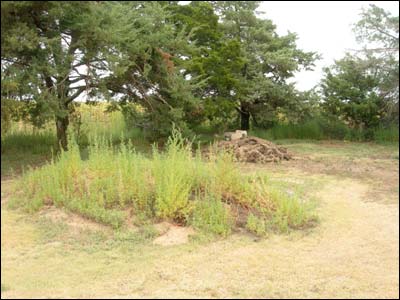 There's not much left of our old dirt pile, but it does provide a good bed for tumbleweeds. This is how it appeared in the summer of 2006. Letters from afar[May 27] Leon Miller of Dallas wrote about the barrage of storms that have swept across our homeland in the past week: "Growing up in the '40s in Pawnee Rock, I remember many tornadoes dancing across the prairie to the west and southwest. I don't ever remember any radio forecasts predicting their immediate destination. They were just a sufficient distance that we didn't seem to be worried. I do recall one tornado that pretty well devastated Rozel, sometime in the late '40s. No one was killed, just a lot of damage." Ray Randolph, a Barton County native now living in Indiana, answered my challenge last week when I wrote about running through lawn sprinklers, and then he called my bluff: "OK, Leon, I'll take your dare. "But it may not be running through the sprinkler as I revert (or regress) to behavior of younger and simpler days. "Other possibilities include playing a game of Kick the Can as the sun goes down; or maybe getting a water gun and squirting the unsuspecting. (These victims, we all learned the hard way, had better have been smaller than yourself if you didn't want to get it back multiplied.) "Since Tag may not be feasible, maybe just a quick game of Hide and Seek or maybe a Scavenger Hunt. "And now I triple-dog dare you to do something and then tell us what you and the boys came up with. "There's gotta be some 'kid' somewhere in all of us. If not, there should be." Remembering ourselves back then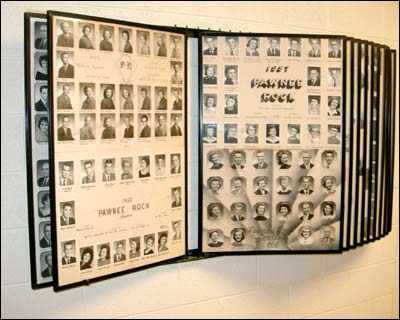
[May 26] Surely we all have our favorite memories of going to school in Pawnee Rock, and a lot of them will be dredged up at the school reunion today at the depot. Maybe it was a science project, or an illuminating moment with a teacher. Just as likely, it was a practical joke or a basketball game. In sorting out my own best moments, I came up with a bucketful as well as a few that made me glad I'm not a teenager anymore. In addition to our personal successes, we do share a few things. We have our building (or the one before it) as a touchstone. Our teachers knew our names before we arrived in kindergarten and kept track of us long after we carried their wisdom into the real world. We may not all have the same memories, but we can each tell a story from every classroom and list our classmates. You and I have gone our separate ways; some of us are more separated than others. Still, no matter where we are in the world we will always have one another because we were educated together in the school of a little wind-blown town in the middle of Kansas. Lives after war[May 25] I grew up during the Vietnam War, which because of the French and Indochinese was an old war before I was born. I read about the other wars of our times: World War I and World War II and Korea. As I sat in church and watched the farmers walk by, I sometimes mistook their sunburned faces for proof of having been to war; I must have read of such a condition in the soldiers in the Pacific. "Was he in the war?" I'd whisper to my parents. As I worked in the cemetery, I'd see the military stones and be disappointed that they were for men who had died decades after their wars ended. Didn't we have any war heroes? I wondered then, and now I marvel at my shortsightedness.
Every family of those men, however, has known the burden they carried. How could war-born trauma, laid upon the shoulders of the young and strong -- ever have been far from their minds, on the tractor, in the shop, at the dinner table, in bed, at church, in the field hunting, as they bathed their fresh-faced children, as they read newspaper stories of yet another war. Tomorrow morning Pawnee Rockers will gather at the cemetery's memorial spire to offer gratitude to our hometown's men and women who offered their lives to our nation. Yes, the ceremony is propaganda for military service, but it is also a real moment for honoring the men and women who put aside normal lives to face their mortality while doing the country's work in distant lands -- and to honor those who served by being the nation's defensive shield between wars. The words spoken in the cemetery will be too late for the men who are already in the soil. The speeches and prayers instead will be for the living, so that we all will remember. On Monday -- whether you believe in war or not, and whether you believe in the wars in Vietnam, Afghanistan, and Iraq or not -- thank a veteran for his or her willingness to serve our country. The soldiers of World War I are gone, and time is quick on the heels of the men and women of World War II and the Korean War. Don't wait until there's nothing left to do but put flowers on a grave. After the ceremony: The Pawnee Rock school reunion will follow the service in the cemetery. This year, it's in the depot on Centre Street. Earlier thoughts: I have written many times about the cemetery or Memorial Day, including these pieces: What the Soldiers Know, The Birth of the Cemetery, Life in the Cemetery, and The War We Live With. A photo I like: No. 88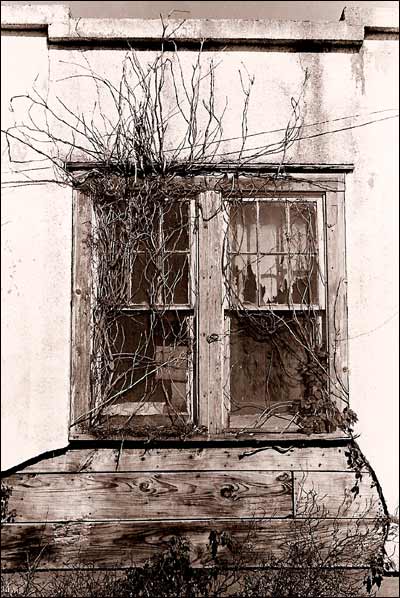
[May 24] The passage of time is rough on memory as well as on buildings. I don't remember which hamlet I made this photo in, but that's probably not important anyway. This photo is about the passage of life. The tattered curtain suggests that the stucco-covered building was a home as well as a place of business; the vine -- well, the vine could have just grown there on its own but maybe it was planted by someone who wanted to tame the bare wall. The photo depresses me. It says that everything we build will return to nothing, that we're all on a path to decay, to being pulled down by the vines of time and exhaustion. But there's more to it. I look at the curtain and think of a family, that maybe there's a child, now grown, who remembers how her mother stood by the window and smiled. Of the day when her father painted the stucco.
Every house in Pawnee Rock was once someone's happy home, at least for a while, and all the rusted screens and fallen porches in the world will not erase the memories held in the heart of someone who was a child there. Knowing where the storms are[May 23] Perhaps you remember the evenings -- lightning flashing in the southwest as we drove down the highway -- when we kept an ear open to the AM radio for the latest news about tornadoes and hailstorms. The announcer, speaking solemnly with an edge to his voice, would state through the bursts of static that a tornado watch existed "along and 35 miles on either side of a line from Tinyplace to Widespot." That was very easy to say for guys in Dodge City and Wichita who were sitting in a stormproof building with a state map laid out on the table in front of them, but understanding where the danger zone lay sometimes required geographical gymnastics for those of us with no maps handy but the ones in our heads. And then weather radar improved and suddenly there were warnings for precise locations that used to be somewhere -- railroad sidings, for example -- but that now were so truly obscure that only people who grew up in, say, Hamburg or Purcell would know the storm's path if that name were announced. This was a problem if the place, like Purcell, had been absorbed by Wichita and was papered over by subdivisions packed with newcomers. Now that we all can follow the storms on the Internet and on cable TV, the forecasters have improved their own delivery. They tell us -- in terms we're likely to understand if we passed Elva Jean Latas' Kansas geography class -- which counties are going to get their knickers twisted and their pates pounded. Here's a mid-evening warning about last night's storms from the National Weather Service in Wichita. It's simple and helpful, although it would be more readable if the folks at the NWS would stop shouting and unlock the shift key. TORNADO WATCH Hamburg, by the way, used to be a wide spot on U.S. 56 halfway between Larned and Garfield. It's still officially on the map: View Larger Map Watch the skies[May 22] Stan Finger, who writes the Finger on the Weather blog for the Wichita Eagle, sends a warning that this is a dangerous day for Western Kansas. Storms are moving across our homeland. A twister near Gove sped across the plains at 50 mph. Here's the current weather map from WeatherUnderground.com. Memorial Day and reunion[May 22] Pawnee Rock's Memorial Day ceremony will begin at 11 a.m. Monday in the middle of the Pawnee Rock Cemetery. The speaker will be Bob Dunavan, a retired Army lieutenant colonel and the brother of Alan Dunavan, a veteran who was buried in the cemetery last month. Afterward, the Pawnee Rock Alumni Association will host its annual reunion at the Pawnee Rock Depot on Centre Street. First, there will be a lunch (pay as you will). A roll call of the classes will follow. If you go to either event, please send us a note or a photo. Let us spray[May 22] Back in the days before Wal-Mart, when Duckwalls and TG&Y ruled the land, kids in Pawnee Rock didn't have a lot of toys. I got a drum one year, a fishing pole another year, an aircraft carrier yet another year. A gyroscope, a set of metal cars, a football and kicking tee. There were other Christmas and birthday gifts as well, but those are the ones I loved and remember the most. We didn't complain too much that Santa hadn't adhered to our long list compiled from the Sears catalog and the fledging GI Joe commercials on TV. We knew going in that we could ask for a lot but were likely to get little. We played and played with our one or two toys. But once summer came around, we were ready to hit the yard, and there was only one toy for that.
One family in Pawnee Rock bought a Slip 'n Slide, and it was popular for a few days. And then we went back to the true toys of summer -- lawn sprinklers. Sprinklers were a different kind of fun. They mixed silliness with lawn tools used by grown-ups. As geezers and near-geezers, you and I now like to walk through town and have our memories awakened by the ch-ch-ch-ch-ch of the pulsating sprinklers, by the swsshhhhh-click-click-swsshhhhh of the oscillating kind that sprays back and forth over the top, and by the quiet doughnut sprinkler that sits on the grass like a fallen halo. And, as there were when we were kids, there are the flat soaker hose with lots of holes, the rotary sprinkler, and the tractor sprinkler. Each one of those presented a certain kind of entertainment in Pawnee Rock. Used upside down, the soaker hose laid a watery surprise for anyone walking barefoot across the yard. The rotary sprinkler was there to get the job done; it spun hypnotically for hours. The tractor, whose little front wheels guided the sprinkler back along the hose, was a mechanical marvel that could fascinate a boy all day as he rode his bike up and down the sidewalk in front of a neighbor's house. The doughnut's spray was good for running through on a hot day, and you could stand in the middle if your feet were small enough. The oscillating model -- owned by our more uptown neighbors (our family believed in sturdy metal sprinklers that never wore out, unlike those plastic sprinklers) -- was a little sportier in that we had to time our runs the long way; if we jumped over the moving bar we got a cold squirt of water from one direction and a cold shower from the other. My favorite was the reciprocating sprinkler, which has the charm of a dipping bird -- the tight spray knocked the arm away, and it sprang back to ratchet the sprinkler head around. I loved to hold the arm and turn the head to spray my sister or put out imaginary fires, and I had a blast trying to step back and forth over the pulsing stream without getting wet. And when we got thirsty, we unscrewed the sprinkler from the hose and drank water pumped straight from the aquifer. Simpler days? You bet. Maybe in a yard near you, kids still run screaming through the spray. I double-dog dare you to be a kid again. Congratulations, Amie Apley: Amie Apley of Pawnee Rock was one of 33 nurses to receive her pin last week at Barton County Community College. Her photo appeared with a story Wednesday in the Great Bend Tribune. (Tribune's Local News; the story may be moved to the "past stories" category) Wagon ruts: Cheryl Unruh, on Flyoverpeople.net, has some photos of Santa Fe Trail wagon ruts in a park in Douglas County, near Baldwin and Wellsville. Pawnee Rock used to have them too, but now they're pretty much plowed under. Movies and views in Pawnee Rock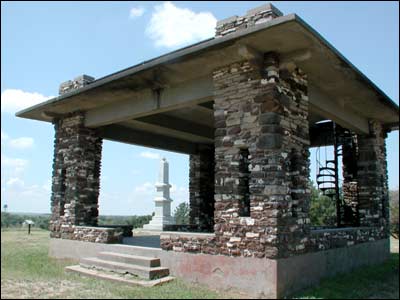
The spiral staircase inside the Pawnee Rock State Park pavilion leads up to the observation deck. [May 21] Helen Froetschner of Larned was e-mailing back and forth with my mom; they're good friends from the Class of 1951 at Larned High. Mom had sent her a link to our post and photo about the passenger train that came through Pawnee Rock, and Helen sent this after looking over PawneeRock.org:
"Mother & Daddy took us often to the top of Pawnee Rock. It was always a spot that the folks chose to visit when we had relation from Calif. or Missouri come visit. "My sister, Kathleen and myself, Helen Marie (McCarty), remember going to outdoor movies at Pawnee Rock. Mother Florence and Daddy Ed McCarty fixed a picnic supper to eat at Pawnee Rock, and then watched the movie -- sitting outside. These are good memories to remember. . . . "The folks always took us for rides every Sunday after church. Those spiral steps up Pawnee Rock took us up to view miles and miles of country." Do you know about Tobias Schultz?
[May 20] A descendent of Tobias Schultz is looking for information about his ancestors. Can you help him? (The snippet of a 1902 plat of Dundee shows a T. Schultz with 80 acres in Dundee. My guess is that it's Tobias.) Here's Eric Schultz: "My name is Eric Schultz from Prague, OK. My g-g grandfather Tobias Schultz emigrated to Dundee in 1874. If you know of any Pawnee Rock historian that would be interested in communicating any history to me, my cell # is 405-567-5096 or e-dress at schultz4panzers@yahoo.com. Thank you." Prague is 45 miles east of the Oklahoma Capitol and sits at the intersection of U.S. 62 and U.S. 377. Super athlete Jim Thorpe was born there. Tell us about the reunion[May 20] Do you know anything about this year's Pawnee Rock school reunion? In previous years, the reunion was at the school after the ceremony at the cemetery, but this year may be different because the city sold the school. If you have the details, please e-mail me and I'll pass them along as soon as I can. T.L. McFann stands on the left in a family photo sent a couple of years ago by daughter Marsha Bouker. [May 19] T.L. McFann of Claflin, who many of us knew as the father of a host of Pawnee Rock school friends, died last week in Hutchinson. He had been a meter technician in Pawnee Rock as well. His and June's children are Marsha Bouker and Susan Brown of Hays, Julie Lange of Wisconsin, Dean of Scott City, Clay and Glen of Rozel, and Hoyt of Great Bend. "T.L." was short for Truman Lee. He served in the Korean War. Mr. McFann's burial was Friday in the Claflin Cemetery. (Full obituary, May 15) [May 19] After seeing all the newspaper stories this month about high school graduation, I spent a good part of yesterday evening trying to remember details of my own graduation. It surprised me that most of my associations with graduation are emotional rather than factual. I hope all of this year's graduates had a good ceremony and do well as they commence the real part of their lives. My best advice? Tuck a copy of your graduation program into your yearbook so you'll always know who sent you on your way. [May 18] I went for a walk yesterday in the woods up the valley from where we live now and once again felt the urge to throw myself into being a naturalist. Son Sam and I stood amid the cottonwoods and birches and watched a woodpecker rattle his brains against an insect's fortress. We saw butterflies smaller than a dime, and mosquito larvae the size of wheat kernels. Cow parsnip and wintergreen grew green against the yellowed grass of last autumn, and the sky was so blue against the clouds and snowy mountaintops that my heart hurt. A lot of people, however, don't see any of that. They don't slow down, and they don't look down. Or up. You probably know those folks. Because you're my favorite people, though, I imagine that as a child you enjoyed digging around in the dirt and stopping to pluck a leaf from an elm and look at its underside. I wouldn't be surprised if you had a bunch of transplanted-from-a-ditch spiderwort in your back yard. The grass, the insects, the fungus, the weeds, the pollen and seeds, the roots, the kinds of soil, the nutrients, the pebbles -- all in layers and all tied together as they have been since the inland sea dried up. Back in my youth, I didn't think much of it. The urge to read the fullness of the earth didn't hit me hard until the early 1990s when I read William Least Heat-Moon's PrairyErth, in which he takes apart a piece of Chase County. It's an exercise that can be done anywhere; I could do it in my backyard now if I could hack through the roots and rocks. But that little cube of Pawnee Rock soil would have meant more because it's the land from which I sprang. It made the dust I first breathed and, if I'm there at the end of my life, the dust into which I will return. And that's another thing -- as a boy digging graves I was often at eye level with that first foot of topsoil. When I bent down inside the hole to lift yet another shovel's load, I saw the bands of color: the light browns, the yellows, the dark chocolate. Roots leading back to grasses and cedars snaked their way through the dirt, unseen to us all until a shovel sliced down and removed many thousand years' worth of cover. Pawnee Rock sits on living earth, and we see only a little of it when we look out the window. I don't think we can really know our home, however, until we look where we've never looked before. [May 17] In the autumn of 1968, our family visited Kanopolis Reservoir east of Ellsworth. It was a Sunday drive, and we were on the lookout for interesting plants and rocks, of which the area has many kinds. One leg of the trip took us to Horsethief Canyon, and it was easy to imagine how such a rugged place got its name back in the days of real Indians and cowboys and cattle drives. The area was gorgeous, with drying grasses framing a pond brimming with succulent life. Back a ways from the pond was a petroglyph; there are several in the area, but one stands out in my mind. These are said to have been carved by prehistoric people, and some have been lost to collapsing sandstone and fools with firearms. I have heard that the area is off-limits now. At the time, I wondered how it was that the Kanopolis area was so different from our Pawnee Rock. Both had plenty of tribes passing through, so why didn't Pawnee Rock have petroglyphs? Who is the man in the carving? Why was he put on this particular rock face? How did the carver keep rock chips from flying into his eyes? This petroglyph is my favorite link to ancient Kansas because it was created by hand and through an artist's -- or historian's -- vision. I laid my fingers on the stone to feel what the artist felt, to touch the past. No, I shouldn't have done that; I understand that now. But an 11-year-old boy is often guided not by reason but by curiosity when faced with something greater than himself. The McDougal livery stood south of where the Christian Church now is and just north of where Dutch Smith's blacksmith shop later sat. The site is now a vacant lot. McDougal owned the livery from about 1884 until about 1900. His name is barely visible in the paint over the sign of the horse.
[May 16] William Sanford McDougal, who came from West Virginia in 1877, settled in Pawnee County, apparently a couple of miles southwest of our hometown. He gave up on living in Pawnee County and around 1884 or 1885 moved to Pawnee Rock, where he began a livery business. He owned various piece of land in the area, including the piece on the old west edge of Pawnee Rock (west of the bus barn as far as the section line, and north from the correction line to the dirt road that led west from the northwest corner of town) and the block on the north side of the western end of Bismark Avenue -- in essence, the northwest corner of town. William, his wife, Maggie, and their son Romey are buried in the southeast side of the main part of the Pawnee Rock Cemetery under the row of cedars. The following information comes from the "Biographical history of Barton County, Kansas," which was published in 1912. The spelling of the name appears both as the shortened "M'Dougal" and as "McDougal." William S. M'Dougal was born in Wood County, West Virginia, September 5, 1841, and came to Pawnee County when he was thirty-three years of age. He located a homestead in section 18-22-14, which is on the line dividing Pawnee and Stafford counties. He farmed this land for eight years and then came to Barton county and located at Pawnee Rock. He was in the livery business in Pawnee Rock for sixteen years. He sold out and retired about twelve years ago. Since that time he has looked after his farming interests, owning 400 acres of land in Pawnee and Barton counties. He was married in 1872 in West Virginia to Miss Maggie Uhl and they are the parents of three children as follows: Romey, 42 years of age, is engaged in the hack line business in Great Bend; Dora, 32 years of age, is now Mrs. Henry T. Ratcliff of Hutchinson and Goldie, 22 years of age, resides at home. Mr. McDougal is one of those men who made up the pioneers of this section of Kansas as he came here at a time when the Indians and buffalo were still disputing the advance of the white man and he has seen this section grow from an almost barren waste to its present high state of cultivation. Mr. McDougal has always been identified with the progressive element in this part of the state and is one of the best known men in Barton County where he has lived for twenty-seven years. All of his farming land is being worked by renters and in addition to these holdings he has a fine ten room residence in a most desirable location in Pawnee Rock. He is one of the boosters of the town who never tires of speaking a good word for Pawnee Rock and Barton County. He has served the town as councilman and always taken an active part in all public matters and is an enterprising and progressive citizen. Mr. McDougal is one of the men who came to this section at a time when it required nerve to stay and battle it out with the many adverse conditions with which the old timers had to contend. He did so however and his success is due to good management and an unfailing faith in the future of this section and could see this county where it is today, one of the best in the State of Kansas. [May 15] Back on May 3, a pretty Saturday, Jim Dye sent a photo of a locomotive pulling a three-car passenger train plus a locomotive facing the other way at the other end. He had a good view of the train -- it passed a couple of blocks south of his house on the west side of town. "What is going on this train keeps annoying me!" the aggrieved Mr. Dye wrote. A train in May -- and a passenger train at that -- certainly would get anybody's attention. It has been many years since any trains used the tracks frequently outside of grain-hauling season. Sixty years ago, such train traffic was common, and a hundred years ago it was the only reliable way to get anywhere on the plains if you didn't want to involve a horse. And, if it has to be said again, Pawnee Rock was founded about the time the railroad reached that location in 1872. But it was obvious Jim was upset. Every time the train crossed a street in town, it blew its horn. And apparently this train passed through town eight times. Perhaps Jim has since found out about the train's mission. I found out this week when my mom, Anita Byers, sent a few notes from her Larned High Class of '51 newsletter. "Last week, May 3rd, we had the Santa Fe Trail Days in Larned. ... A parade in the morning and in the afternoon the Chamber of Commerce arranged for a vintage railroad passenger train dated 1956, with three coaches. They had 3 trips to Dundee and back and a total of 500 passengers took the trip. The trains were from a train museum from Scammon, Kansas. ... Big and little folk enjoyed the trip, even tho it was short." And so Jim Dye and the rest of Pawnee Rock got to see -- or hear -- the westbound train go to Larned, go to and from Dundee three times, and then return to the east along the fabled Santa Fe Railroad tracks. The train came quite a ways to reach Pawnee County. Scammon is in Cherokee County southeastern Kansas, not far from Joplin, Missouri. The Heart of the Heartlands train museum, which is based at the nearby Carona depot, sent this train and offers other excursion rides -- including two this weekend at Yoder and Hutchinson. [May 14] There's a truism that folks vote their pocketbooks. I certainly do, picking the candidate who is most in tune with my idea of economic good health. So why shouldn't we expect Senators Sam Brownback (left) and Pat Roberts and the four representatives to feel the same way? They vote to improve the interests of people like them. Are you like them? Compare your net worth with the six Kansans in the Fortune 535. Click on the dollar figure in the chart for a comparison of the officials' wealth with the average family's and to see whether the officials have gotten richer in office. The Arkansas River has been full, Ash Creek has a current, and fields are soaking up water for the next crops. Anyone looking at his photos might think our state is just as well watered as the speculators and railroad land agents of the 1870s laid it out to be. What I'm worth: There's an update to yesterday's discussion of my bargain price of $38. My mom wrote to say that the $38 paid for five days of hospital care when I was born in 1956. The doctor tacked on another $100 for the delivery. My inflation-adjusted price now stands at $1,057.54. And, because she's my mom, she wrote this: "But you were worth all that and much, much more. I can't think of a better investment!" Today is Mom's birthday, and she went out of her way to make me feel special. Isn't she a great mom? [May 13] Back in the 1950s, you could get a lot of stuff for $38. Two hundred gallons of leaded gas, perhaps, or groceries for a several weeks. Mr. and Mrs. Elgie Unruh went to Larned and spent their $38 on a baby. That would be me. My sister, Cheryl, was looking for an old photo of herself and Mom the other day when she came across this faded receipt from the hospital in Larned. She mentioned it to her husband, Dave, who asked, "Was he worth it?" Cheryl wrote: "My initial response was 'No,' but in pondering it, I guess you were worth it." That was very kind of Cheryl to say, but it does raise the legitimate question of whether I really was worth $38. I imagine that everyone has that nagging thought about whether we have lived a full-enough life to have paid back our parents (and, in my case, a sister, who could have benefited from $38 kept in the bank to draw interest for another couple of years). Have I done all I could? Have I made other people glad I'm alive? Besides what I consider my main contribution -- helping produce two more boys, who each cost considerably more than $38 -- have I so far left the world better off? I think I have, but any guy who's worth his $38 would. Out of curiosity, I found an inflation calculator to see what my parents' $38 would be worth now -- $291.21. If I don't get busy soon, I'll never get that paid off. [May 13] Susan Vondracek saw the photos of the 4-H Fair prize-winning cooks and recognized some of them. "I am one of your silent readers. I enjoy your blog and website. Thought I
might help on photo #86. "First photo -- From the left -- (1) Jennifer (Otte) Finger
now deceased; (2) unknown, I know she graduated from LHS in 1978;
(3) Susan Finger. "Second photo from the left (1) Patricia Finger (I believe her married name is Stacey); (2) Cindy (Fox) Grant; and (3) unknown." Thanks, Susan. Trish Finger's brother, Stan, who is a reporter for the Wichita Eagle, has some superb tornado photos and discussion on his weather blog.
[May 13] Kay Steed sent this note about Velda Pfister. "Our family was certainly blessed to have had Velda in our lives for 101 years. She
was such a gracious lady who always welcomed us with loving arms and usually a home
made chocolate cake. That she lived alone right up to the end of her life says so
much about her. All the Cooper cousins would converge on her tiny apartment, usually
once every summer, and pelt her with questions about our ancesters. She remembered
everything that we ever wanted to know. We'd start out by asking her brother, Doyle,
and he couldn't remember the facts and would turn to Velda and she'd give us all the
answers. "She didn't have an easy life, but I never heard her complain and she and I
exchanged letters right up until the end. She kept a daily journal, which I imagine
must be a wealth of information, if anyone keeps it and reads it, which she didn't
think anyone would want. We'll miss her." Velda Foster Pfister's husband, Cecil, died in 1969 and is buried in the family plot (the gray stone) in the Pawnee Rock Cemetery. [May 12] The Hutch News has published more details about the life of Pawnee Rock native Velda Pfister, who died Saturday at age 101. She was born in 1906 to Melvin and Ella Cooper Foster in Pawnee Rock and was a homemaker and a registered nurse -- she got her degree at the Halstead School of Nursing in 1928. A year later, she married Cecil Pfister of Pawnee Rock. She was a member of the Daughters of the American Revolution, the United Methodist Church of Pawnee Rock, and the 20th Century Club. Mrs. Pfister's husband, daughter, brother (educator Doyle Foster, in February 2007) and twin sisters died before her. Her funeral will be at 11 a.m. Wednesday at Beckwith Mortuary in Larned, and she will be buried in the Pawnee Rock Cemetery. (Full obituary) Leon Miller of Dallas remembers Mrs. Pfister: "Velda Pfister was a dear friend of my mother, Elsie Miller, who died of cancer 50 years ago in 1958. She was also an aunt or great aunt of Philip Anshutz, one of the wealthiest men in America." Mom drove up from central Arkansas to Troy to see our family as we finished Biking Across Kansas in 2007. [May 11] Normally my wife rolls up her sleeves and changes the tires on her car in the spring and fall as we move in and out of studded-tire season. Her recently broken leg, of course, has kept her out of the driveway this year. She likes this chore, and she's as efficient at that as she is at having me get her oil changed for her. My wife is quite strong and determined, and no lug nut is going to stand in her way. I knew it gave her no pleasure this weekend to send me out to mess with her precious wheels. I let the boys help, rolling the tires down from the shed and working with the tire tool and jack, while my wife issued edicts from the porch about not scuffing her hubcaps and mounting the wheels with the tread facing the right way. Happy Mother's Day. We changed your tires. Changing tires is a rite of passage for boys, I know, and I suppose for girls as well. It's a sure sign of independence. One afternoon in the late 1960s, Mom was driving my sister, Cheryl, and me home from somewhere in the east when the right front tire went flat. Normally, Dad changed our flats but he wasn't with us, so that afternoon was the first time I saw Mom change a tire. She got out the tools and the spare and set to work. Cheryl and I, having recently learned that you could get a trucker to honk his air horn if you moved your fist up and down, stood on the shoulder and signaled truckers. Apparently one of them thought we were either cute or helpless, and he pulled over and took charge of the tire change. After the trucker left, Mom was not happy with us. She had wanted to change it herself and felt cheated that a man had given her the "little lady" treatment, and perhaps she was angry that she had let him do it. I know now that Mom was enduring many frustrations in those years, and my unintentional contribution to this episode stays with me like a bruise. The other side of the story is that I never questioned that Mom could change the tire. Mom was doing what needed to be done. In the following years, as Mom and I drove to places like Salina or Lawrence, I felt both protective and proud. And she's still out there, driving from Arkansas to Kansas and Texas in her 70s. She has steel, and no lug nut is going to stand in her way. Happy Mother's Day, Mom. The photo of Mrs. Pfister, taken by Mandy Sheldon, was made at Mrs. Pfister's home when she was 100. More about Mrs. Pfister was posted last November 4. Other mentions of her and her family appear in later entries that month as well. (Scroll up on that page to read them.) [May 10] Like many of us, I grew up in 4-H, specifically with the Pawnee Rockets and the later Pawnee Rockers. As a college kid, I was too old for 4-H but I could still take photos at the Pawnee County 4-H Fair and sell them to the Tiller and Toiler. The images didn't have to be imaginative; newspaper reproduction -- especially if the editor wanted to sell extra copies to parents -- required only well-lighted faces and a simple background. In the summer of 1976 or so, that led me to the yellow limestone-block building at the southeast corner of Schnack Park, where the non-animal exhibits were displayed. I lined up the youth-division winners in each discipline and recorded them for posterity. Except for Pat Finger, the cake maker on the left, the names of the six young women have slipped my mind. What I really like about the photos is the girls' composure. They're self-assured, they're with friends, and they're darned good at baking. These girls are timeless emblems of 4-H Clubs. Ash Creek empties into the Arkansas River at Ash Creek Point, at the bottom of this satellite photo of the Loving spread about a mile southeast of Pawnee Rock. An ancient creekbed follows the river toward Great Bend.
[May 9] Just about every boy who grew up in Pawnee Rock knows Ash Creek -- not just where it is but where the good fishing holes are. We know the weedy ditch where it passes under the highway and railroad tracks, and we know where it crosses the road by the old Keeley place south of Pawnee Rock. We know about the Bowman family's long-gone round barn near the creek, because we explored it on our fishing trips. We know all about Ash Creek Point, where the creek dribbles into the Arkansas River, because we camped there. Ash Creek even made it into the movies. I didn't realize it until yesterday, when I was poring over the terraserver-usa.com/USGS satellite photos of the creek. I'd seen the photos before, but this time it hit me like a hammer that the winding creek disappeared into the fencerows and then reappeared some distance away. (See a bigger version of the photo on today's homepage.) I guess that during all my years of growing up in and returning to Pawnee Rock, I just overlooked the realignment. The trees that grew along the creek's straight sections looked like shelterbelts, so I ignored them and didn't think about the creek I didn't see. That embarrasses me. Besides the Rock, Ash Creek is our most Pawnee Rock-ish geological feature. The creek played a big role in our history, what with the Santa Fe Trail traffic and all those floods. But wait -- there's more. As I followed the creek to the Point in the satellite photos, I noticed a former creekbed northeast of the Point and southeast of the Loving farmstead. Seen from a hundred miles up, the image of the creek lingers in a pasture. Is that an ancient part of Ash Creek? I think it's entirely possible that Ash Creek once followed that route and emptied into the Arkansas farther downstream, but a flood on the Arkansas or Ash Creek opened a more direct creek channel to the river, and the creek abandoned its unneeded section. What would you find if you dug there in the middle of the field? Clamshells and bison skeletons? Wagoneers and Indians? Did later Arkansas floods fill in the disused creekbed over time? Did a farmer strip out the water-hungry trees? There's a lot more to Pawnee Rock's natural history than I ever suspected. [May 8] I've had the usual things to do lately -- a couple of books to edit, the newspaper job, shopping, walking the dog twice a day; they're the kind of projects we all fill our days with. All that would be simple to handle, to the point of not even thinking about it. But two weeks ago Sunday, my wife broke her leg badly while skiing with Nik and had to be slid off the mountain and taken by ambulance for surgery. She was in the hospital for three days and now is home and on her way to a painful but eventually happy recovery. In the meantime, everything we do has changed. My wife can't drive, can't go to work, and can't walk the dog. She has, however, willed herself to stand up long enough on crutches to wash the dishes (the dishwasher died last week), cook for the boys, do most of the laundry, and hobble and sweep at the same time. She home-schools the boys, and that continues. The boys are doing a lot more work around the house, and I'm doing more, too. The stress may be good for our characters, but it's tiring. I'd like to feel sorry for myself, but I realized that I'm now doing almost as much as any single mom or dad. And I'm not even the one with the shattered leg. So who am I to complain? There's little time for relaxation, and the workday eats the night too as I compensate for my wife's lost income. Very early Wednesday, as I was up late editing, I amused myself by keeping an eye on the weather radar over Barton County. At 5 a.m., a red-and-yellow storm was slouching aross the map. If you live in Pawnee Rock, the storm and its dark threats may have woken you. If you now live somewhere besides Pawnee Rock, as I do, you probably have pleasant memories of prairie rain in the night. The moist smell, the gusts, the urgent flashes that illuminated trees full of upside-down leaves. You remember counting the seconds between the lightning and the thunderclap and getting a little on edge as the count got shorter. Rain falling against the house. Rain that blew in through the screen on your bedroom window. Rain that pattered against the leaves. You may also recollect how easy it was to fall asleep once the storm settled down and all that was left was rain. Early Wednesday morning, that's all I asked for. I wanted the rain to fall. [May 7] Joan Smith, who grew up across the street from the Pawnee Rock school, wrote: "Your essay about dancing spoke to me. Dancing was not allowed when we went to high school. I always yearned to be a good dancer, however. Not until we retired, were we able to finally pursue my dream. "Lots of people in Arkansas enjoyed dancing, so we took lessons in Little Rock. Finally we were able to get out on the dance floor and dance several different styes of dances. What a joy! "We don't ballroom dance anymore. but we do line dance. Very good exercise for old bodies. Lessons are the key." My sister, Cheryl, added a bit of perspective on Friday night dances: "Those nights were
always awkward for everyone, I think." I appreciate what Cheryl felt, and I agree with what Joan wrote about lessons. I learned to swing dance when I went to KU, and that served me well in Austin with its many country bands and bars. And then I married a woman who for all her good points doesn't go to bars or dance. I enjoyed my dancing while it lasted. [May 6] Some school memories make me cringe. Leading that hit parade are thoughts of any Friday night dance. I was not a ladies man. I was the guy who found a bit of pride in announcing that I didn't need a date; I was going to play the field. I was a guy who sat wistfully along the lunchroom wall when the lights were low and "Cherish" filled the air. Sure, I wanted a girlfriend but I didn't know how to get one. I had music in my head and and feelings in my heart, but I didn't know how to express this: Cherish is the word I use to describe Toward the end of the evening, I would work up the nerve to approach a girl, usually older, who had sat out as much as I had and ask her to dance. Both matched and mismatched, we would walk to the edge of the dance floor and do our best for the length of a song. Neither one of us would be good at fast dancing. If it was a slow dance we would feign embarrassment, but I think we were both glad to have someone to touch. She would put her arms around my neck, or one hand on each of my bony shoulders, and I would put my hands on her back near her waist. I liked the feel of her hair on my cheek. I longed to accidentally brush my hand against her bra strap but was certain that my evening would end as soon as I did. After a while -- not as a freshman at Pawnee Rock but as an upperclassman at Macksville -- I did learn to feel less awkward about dancing and holding girls close. I was serially sweet on several girls, and they were my best friends. Still, I couldn't dance with rhythm and I couldn't read a girl's emotions to save my life. I know that now. At the time, I just felt confused, as if all the world but me knew how things worked. Oh I could say I need you but then you'd realize Some kids -- good dancers -- fell too far in love and soon got graduation and wedding gifts, and I was happy for them and their babies. I think I knew without realizing it, however, that my best chance to find love would be not among my schoolmates but instead in Larned or Great Bend or at college. It would be in a town where nobody had seen me dance. [May 5] Bessie Dueser French, who moved from Pawnee Rock to Great Bend in 1992, died Saturday. She was 93. Mrs. French had been a member of the Methodist Church in Pawnee Rock. She lost two husbands: Andrew Dueser died in 1973, and Floyd "Bud" French died in 1987. Mrs. French will be buried Wednesday in Great Bend. (Full obituary)
This is the Fairhaven farm, photographed around 1912, of Sam and Lizzie Schultz. [May 5] Sam and Lizzie Schultz lived in what was said to be the easternmost house in Pawnee Rock Township -- way up in Section 1, on the east side of the southeast 160 acres. The Schultzes lived just north of William "Bill" Mull, three miles northeast along the highway from Pawnee Rock and then nearly three miles north. Another photo of their farm is in the Gallery. My dad took me out there once or twice to look at what sticks in my mind as a farmstead that was a windstorm away from collapse. Perhaps the trees are still there even if the farmhouse no longer is. He wanted me to see it because the Schultzes were his grandparents on his mom's side. The Schultzes' five children are listed at the end of the following article. Lena married Otis Unruh of rural Pawnee Rock and became my grandmother; Clara never married, and she lived in Pawnee Rock as a caretaker for Martha Koehn; Ed and Lincoln lived in Great Bend, I think; and Ella married Harvey Dirks and lived past 100 years (more about Ella). This article was first printed in the "Biographical History of Barton County, Kansas," published in 1912. Mr. Schultz is the eldest son of Mr. and Mrs. Christian S. Schultz of Pawnee Rock township, and was born on July 12, 1876. The privations of his earlier years were such as to make him learn the value of money and the results to be obtained by hard work, and these two characteristics are stamped on every feature of his surroundings. He owns in fee simple one hundred and sixty acres of as fine farm land as there is in Barton County, and rents one hundred and forty adjoining. His farm, therefore, covers three hundred acres, and is in the highest possible state of cultivation. His residence is a two-story frame containing ten large airy rooms. It is surrounded by numerous forest trees and a young orchard, and there are enough shrubs and plants within the paled yard to make the place very inviting. The barn, granaries, automobile garage, and various other outbuildings are all new, commodious and in fine condition, and make the farm present a very substantial and prosperous condition. Mr. Schultz also owns three acres near the town of Dundee and has just built thereon a good four room cottage for rent to a tenant. On February 13, 1898, when the prospects for crops were about the same as they had been for the past five years -- total failures -- Samuel C. Schultz and Miss Lizzie Unruh, of Lone Tree township, McPherson County, Kansas, were married, and the two went to farming for themselves. That they have succeeded is proven both by their surroundings and by the five handsome children of which they are the parents: Lena, 13; Clara, 12; Edward, 10; Lincoln, 8 and Ella, 7. [May 4] A small airplane provides imperfect entertainment -- pleasure but not always comfort. Whether you've been on one or not, you've probably seen them bucking the wind on hot days. I've never decorated the inside of a plane, so to speak, but I've felt like it a few times. That said, one-engine prop planes are a blast. They can take you just about anywhere and do it slowly enough that you can really see what you're flying over. If you're in a hurry, they can move on the diagonal over Kansas' rectilinear highways and save you plenty of time. But I like the slow-scenery part the most. I do enjoy seeing the world from the third dimension. The world turns on money, however, and I know I'm not going to burst anyone's bubble by pointing out that today's real aviation money is not in a slow flight to Manhattan for a football game. In our town far from Kansas, I took Sam to an aviation show Saturday at the big airport. In a maintenance hangar, we strolled past dozens of booths offering the latest GPS gadgetry, balancing of propellers, financing and insurance, maintenance of rotary engines, infrared cameras, and information about military areas of operation. Among the Super Cubs and helicopters sat Cessnas, a Hawker, a Lear, a Beechcraft, and a 747, so I felt as if Kansas had come to me. There were lots of other planes too, including a couple of rehabbed warbirds from World War II and the Korean War era, plus the local military aircraft: a roped-off and guarded F-22 Raptor, as well as a C-17 cargo jet, a C-130, a Black Hawk, and a Pave Hawk, which is a Black Hawk dressed up for rescue missions. It amused me that few people cared to watch the $138 million F-22 sit there. Most everyone wanted to spend time with aircraft they could touch. FedEx and UPS were there with an MD-11 and 747; our big airport is the refueling spigot between eastern Asia and the rest of the world, and we see wide-bodies from these and a dozen other airlines all the time. All the pilots and crews were there because they love to talk about their planes. The Hawker and King Air salesmen from Wichita were there, too, but it was obvious from their dispositions that their interest was in chatting up not penniless dads but guys with corporate financing. I enjoyed a few minutes discussing the pending aerial war games with a man from Eielson AFB, near the center of Alaska. I asked whether we thrill-seekers could watch from the highway with binoculars, and he said we might see the planes for only a few seconds as they ripped past on their way to bomb something. "But that's what it's all about, isn't it -- the impression of speed?" I asked. Amid all this showy aluminum and carbon fiber, I couldn't help feeling that my best impressions of flying were created by the sturdy little Cessnas that many of us got to know in the heyday of the Flying Farmers. Back in the 1960s and 1970s, we'd line up at the Great Bend or Larned airports, weigh ourselves, and pay a penny a pound for the pleasure of having a fellow run us around for half an hour or so at 75 knots. The farmers donated their skill and engine hours, and the money went to charity; aviation gas was cheap then. It wasn't much, compared to riding in a jet, but for most of us it was the only day we saw the tops of the elevators. [May 3] Bill Werhahn, who lived six miles north of Pawnee Rock, died Thursday in Great Bend. He was 87. He was the husband of Darlene Werhahn, who for many years was an English and psychology teacher in the Pawnee Rock schools. They have a son, Randall of Pawnee Rock, and a daughter, Jan of Colorado. Mr. Werhahn's funeral will be Monday morning in Great Bend. (Full obituary.)
This cemetery is near Fairfield, Texas, southeast of Dallas. [May 3] As a cemetery fan, I've made photographs in graveyards from mossy Savannah, Ga., to a subarctic riverside in Nome, Alaska. One of my favorites is this stately cemetery near Fairfield, Texas. From the moment I drove up its sandy entrance, I felt as comfortable here as I do in Pawnee Rock's cemetery. The conifers are taller, but they have the elegance of our cedars. The picket-sided grave houses would be rare in Kansas, but they fit the locale and people of the East Texas piney woods. Despite its tall trees, this small cemetery has the open feel of our cemetery. It too is atop a hill, where it catches the wind from the south. Tobias and Lucy Nichols are buried in the Pawnee Rock Cemetery. [May 2] Joyce Gilbert DeZalia is giving us another revealing look at the people who built Pawnee Rock. Last month, she told us about Albert and Catherine Foster, and now I am glad to present another piece by Joyce, this time about two of her great-grandparents, T.P. and Lucy Nichols. T.P. ran a restaurant and a couple of stores in Pawnee Rock. He came from eastern Europe in the 1870s and worked long and hard to become a mainstay of our town. His name shows up many times in PawneeRock.org's pages. Because the biography of the Nicholses is so substantial, I've given it a permanent page of its own in the History section. Find it here. Joyce sent several pages of photo albums with the biographies. One of the pages is on the homepage today and will move to the Gallery afterward, but all of the pages are placed with the permanent page. Much of T.P. Nichols' history matches that of our community's Mennonite ancestors, who apparently came over on the same boat. [May 1] You've probably noticed that as you drive west from Pawnee Rock the roads become a little harder to come by. Our township has them every mile, back and forth, making it easy for farmers to reach their fields and for us to get to Grandmother's house on Thanksgiving. But immediately to the west, the West begins. The land is less farmed and more often left to pasture. Don't take my word for it. Take the word of Ben Fry, a really smart guy at MIT who produced a map of the Lower 48 with every street and road on it. His map doesn't have any geological features, but you can see where the cities are because those are the dark spots -- it's where the roads are most frequent. In central Kansas, the roads peter out and the open spaces begin. You may have noticed on your standard Rand McNally map how the town names dwindle off around 100 degrees west longitude as well. (The north-south road just west of Pawnee Rock is at 99 degrees west.) The page I'm sending you to also has a map showing Kansas City and the state west past Salina and Hutchinson. You'll be able to see, by the lack of roads, where the federal reservoirs, the Arkansas River, and the Flint Hill ranges are. It's where there are no roads. In the big map, you can find Great Bend by looking for the usual curve of K-96 and U.S. 56. Cheyenne Bottoms is the "hole" in the middle of the state, and we're to the southwest of that. And to the west of us is the open country. Here's the map of all the roads in the contiguous states. |
Sell itAdvertise here to an audience that's already interested in Pawnee Rock: Or tell someone happy birthday. Advertise on PawneeRock.org. |
|
|
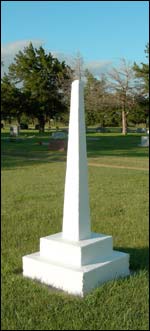 There were indeed soldiers and sailors among the Pawnee Rock generations who came before me, but their service was not often talked of by the time I was listening. As it always is, the veterans rarely told war stories outside their circle of men who understood. For many men, the only mention of their service was a few words in their obituary.
There were indeed soldiers and sailors among the Pawnee Rock generations who came before me, but their service was not often talked of by the time I was listening. As it always is, the veterans rarely told war stories outside their circle of men who understood. For many men, the only mention of their service was a few words in their obituary.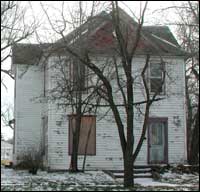 All buildings have ghosts like that. Men and women laughed in these structures, and worked, and loved, and suffered, and sometimes died in them. Walk through the streets of our hometown, and listen outside the old houses for the families who lived there.
All buildings have ghosts like that. Men and women laughed in these structures, and worked, and loved, and suffered, and sometimes died in them. Walk through the streets of our hometown, and listen outside the old houses for the families who lived there.
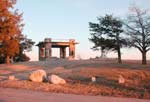
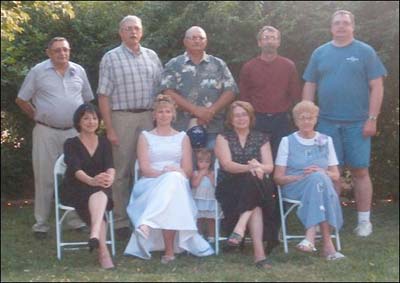
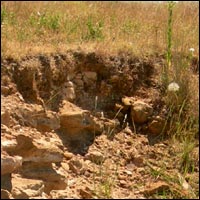 There's one nature-related thing I wish I had done when I lived in Pawnee Rock. I would like to have cut a cubic foot of topsoil out of the earth's skin and dissected it with tweezers and a magnifying glass.
There's one nature-related thing I wish I had done when I lived in Pawnee Rock. I would like to have cut a cubic foot of topsoil out of the earth's skin and dissected it with tweezers and a magnifying glass.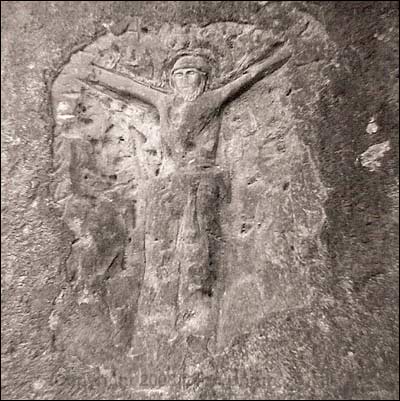
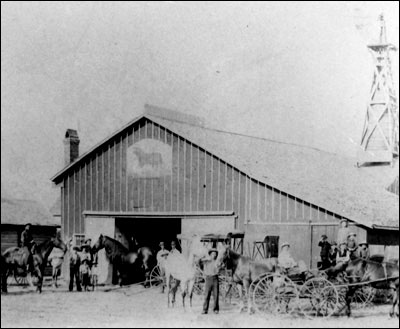
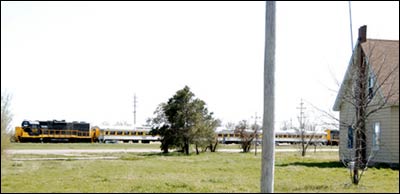
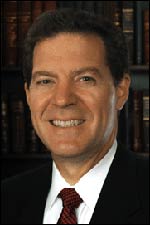 Perhaps you do; shopkeepers do, schoolteachers do, and bankers do. We all want to be represented by and to support someone who "looks" like us -- who understands our economic situation.
Perhaps you do; shopkeepers do, schoolteachers do, and bankers do. We all want to be represented by and to support someone who "looks" like us -- who understands our economic situation.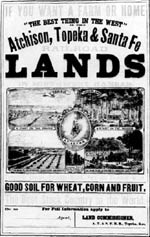


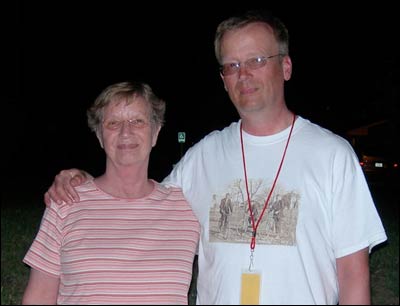
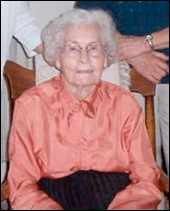 [May 11] Velda Foster Pfister, who was 101 years old, died Saturday at the hospital in Great Bend. She grew up in Pawnee Rock and moved to Larned, and her services will be at Beckwith Mortuary there.
[May 11] Velda Foster Pfister, who was 101 years old, died Saturday at the hospital in Great Bend. She grew up in Pawnee Rock and moved to Larned, and her services will be at Beckwith Mortuary there.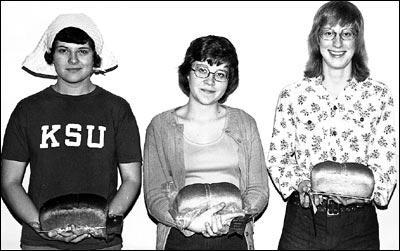
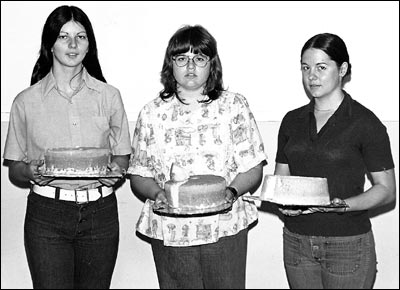
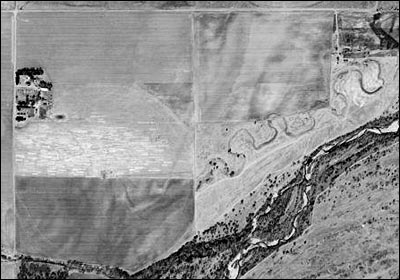
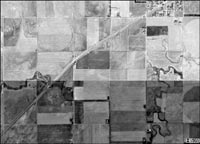
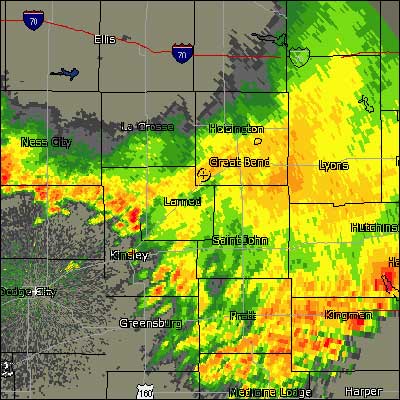 WeatherUnderground.com's map of Pawnee Rock at 4:58 a.m. Wednesday.
WeatherUnderground.com's map of Pawnee Rock at 4:58 a.m. Wednesday.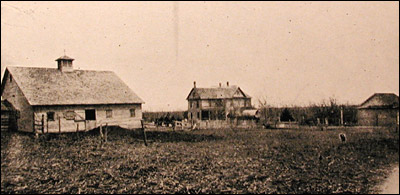
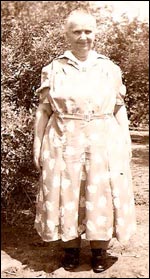 Samuel C. and Lizzie Schultz, who have named their farm in Liberty township, four miles northwest of Dundee, and ten miles southwest of Great Bend, "Fairhaven," are among the younger generation of farmers in this county.
Samuel C. and Lizzie Schultz, who have named their farm in Liberty township, four miles northwest of Dundee, and ten miles southwest of Great Bend, "Fairhaven," are among the younger generation of farmers in this county.